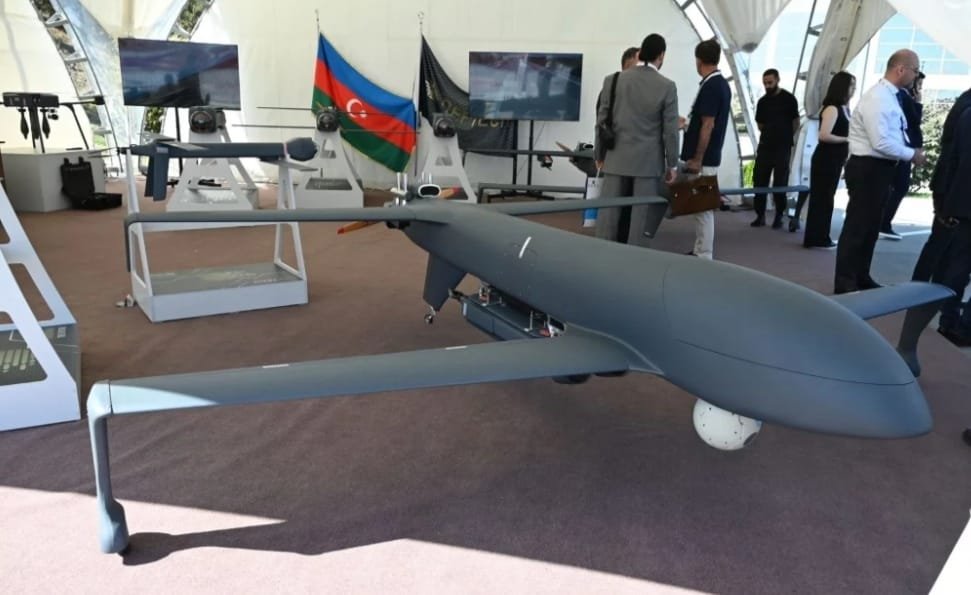
Azerbaijan’s Deftech Unveils a New Generation of Drones at ADEX 2024: From Local Design to International Ambitions
At the fifth edition of the ADEX 2024 International Defense Exhibition held in Baku, Azerbaijan’s Deftech company presented a new generation of drones. These locally developed unmanned aerial systems (UAVs) caught the attention of participants due to their advanced capabilities, covering both reconnaissance and precision strike missions. Among the drones unveiled were the DT-001, DT-101 VTOL, F-1500, F-5000E, AD-G4, and MT-100. According to the event organizers, approximately 90% of the production of these systems relies on local technologies, reflecting Azerbaijan’s growing industrial and technological capacity.
The development of these drones occurs in several stages, as explained by Anar Iskandarov, a representative of the local production company. “The processes of designing these devices and shaping their aerodynamic characteristics are carried out by local specialists,” he stated. Once the design is finalized, the drones undergo rigorous testing before entering production. With the help of new technologies, Azerbaijan is capable of producing UAVs for both reconnaissance and attack purposes, meeting the growing international market demand.
Since the 44-day war, which saw extensive drone use on the battlefield, international interest in Azerbaijani UAVs has significantly increased. According to Iskandarov, many countries are now interested in importing these advanced systems. One of Azerbaijan’s strategic priorities is to enhance its drone export potential, as evidenced by the enthusiasm of the delegations present at ADEX 2024.
Among the models showcased, the DT-101 VTOL is a long-endurance surveillance and targeting drone, equipped with a vertical takeoff and landing system (VTOL). This model weighs between 55 and 75 kg depending on the mission configuration and has a wingspan and fuselage length of 3.6 meters. Powered by four VTOL electric motors and a 180 cc thermal engine, it can reach altitudes between 3,000 and 5,000 meters, with a flight endurance of five to ten hours. It is equipped with electro-optical (IO/EO) cameras, multispectral cameras, LIDAR, cooled FLIR systems, and SIGINT/ELINT pods for electronic warfare missions.
The DT-001 model, meanwhile, is an armed drone designed for long-duration missions, with a maximum takeoff weight between 75 and 120 kg. It shares the same dimensions as the DT-101 but is equipped with a 360 cc thermal engine, giving it a higher cruising speed of up to 130 km/h. In addition to its surveillance capabilities, this model can carry payloads for attack missions, including cameras, LIDAR systems, and electronic countermeasures. It is also equipped with anti-aircraft munitions with a range of 40 km.
The F-1500 and F-5000E strike drones stand out for their ability to operate in hostile environments. The F-1500 model can carry thermobaric warheads weighing between 0.5 and 2.5 kg, with a maximum range of 40 km. Compact and agile, it is optimized for rapid interception missions. The larger F-5000E model has a wingspan of 2.2 meters and can carry a 5 kg payload, including anti-personnel warheads, armor penetrators, and thermobaric charges.
The MT-100 model is distinguished by its long-endurance surveillance capabilities, rising to an altitude of 100 meters to observe wide areas. Powered by electric motors, it is equipped with a 30x optical zoom camera and can also be mounted on armored vehicles for rapid deployment. Its navigation system, enhanced by a multi-channel GPS system resistant to jamming, makes it a valuable asset for deep tactical operations.
Finally, the rotor-equipped AD-G4 attack drone, capable of carrying up to four 82 mm mortar warheads, is designed for offensive missions against armored vehicles. Equipped with day/night navigation and communication systems, it can also intercept enemy signals, offering operational versatility on the battlefield.


